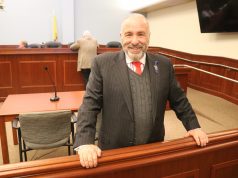
Newly released figures show that the beach counties in New Jersey saw improvement in the summer of 2021 based on occupancy tax data.
Tourism officials say that a majority of Cape May County tourism businesses could see a full recovery from the COVID-19 pandemic in 2022.
Cape May County’s lodging industry last year surpassed the occupancy tax collection rate of 2019, which was a record year, and smashed the rate of collection in pandemic-depressed 2020.
Based on the year-end occupancy tax collection report for 2021, the county saw an increase in collection over 2020 of 63.4 percent and an increase of 24.5 percent over 2019, according to a news release.
“We started to see an increase in tourism spending in July 2020 when some restrictions were lifted. Our businesses reopened and followed CDC guidelines, and visitors were returning in numbers better than expected,” said Cape May County Commission Director Gerald M. Thornton, liaison to the Department of Tourism and Public Information.
“We were coming off a record 2019 with $6.9 billion in tourism spending. However, Cape May County saw a decline of 21.1 percent in spending in 2020. One in every five dollars spent in 2019 was lost due to COVID-19 in 2020. We knew it would be a difficult climb to recover from those losses,” Thornton continued.
The occupancy tax is a 5 percent charge levied on hotel, motel and bed and breakfast room rates and serves as a metric to measure overnight stays.

Occupancy tax revenue is also used as a gauge to measure all tourism sectors such as food and beverage, retail, recreation and transportation. As lodging goes, so do the other sectors. On average the overnight visitor to Cape May County spends $374 per person, per day, the release stated.
“The occupancy tax collection data, provided monthly by the New Jersey Treasury, gives us hard numbers that measure overnight stays in Cape May County,” said Diane Wieland, director of the Cape May County Department of Tourism.
“The county experienced a loss in direct tourism spending of $1.54 billion in 2020, the first time Cape May County has seen a decline in tourism spending since 1994. This decline knocked us back to the tourism numbers of 2013. We lost eight years of growth,” Wieland added.
Cape May County went from $6.9 billion in 2019, a record year, to $5.4 billion in 2020. The 2020 figure was under the county’s direct tourism spending of $5.5 billion back in 2013.
Even with the losses, Cape May County still generated the highest amount in total direct tourism spending in the state, outpacing Atlantic County for the first time in 2020, according to the release. The lodging sector experienced the biggest loss with a 14.3 percent decline, equaling $383.2 million in 2020.
Cape May County saw an increase in occupancy tax collection in 10 of the 12 months in 2021. January and February saw a decline over 2019, but growth made up for those two months during the balance of the year. July and August were record months and a strong fall and early winter saw an increase of nearly 25 percent over 2019.
“Additional marketing funding provided by the Cape May County Board of County Commissioners allowed us to up our game and expand our marketing efforts in the fall and winter. The increases in occupancy tax data are a strong indicator that the campaign worked and helped in the county’s recovery,” Wieland said.
The full tourism report will be released by the New Jersey Division of Travel and Tourism in early May. Wieland noted that tourism officials will then get a better idea how the increase in overnight stays impacted total spending and where the state is in terms of a full recovery from the pandemic.







